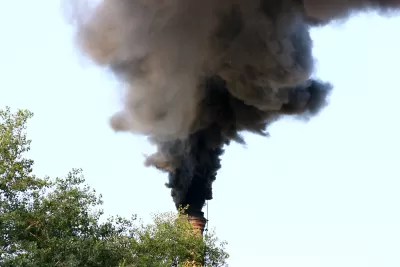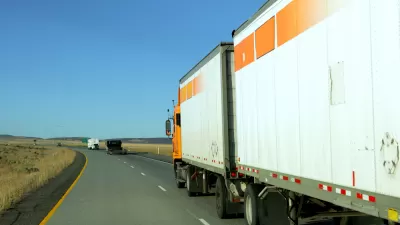The agency cites health risks of air pollution as reason for the new limit; states appear concerned it will kill their economies.

This week a group of 24 states filed a lawsuit against the U.S. Environmental Protection Agency’s new air pollution limits. The rule, announced last month, updated national air-quality standards for the first time in twelve years, significantly lowered limits for annual particulate matter (commonly referred to as soot) from 12 micrograms per cubic meter to 9. According to an article from The Hill, the new soot limits are slated to take effect in 2023, at which point states that do not meet the limit would be required to implement policies to improve PM2.5 levels.
“The EPA estimates that in that year, compliance costs could be $590 million. But it estimated that health benefits could be worth between $22 billion and $46 billion and include up to 4,500 lives saved,” reports Rachel Frazin.
Though the lawsuit does not outline states’ reasons for suing, Frazin points to a press release from Kentucky Attorney General Coleman that suggests they are suing on the grounds that the rule could drive jobs and investment out of their states.
The Biden administration’s rule change comes as national or global conversations around air quality and pollution’s role in poor health outcomes — particularly in poor communities and communities of color — have heated up. Earlier this year, a report from the First Street Foundation found that roughly 25 percent of Americans live in places with unhealthy air quality, which is only being exacerbated by climate change, and Redfin announced that it will be adding an air quality score to the data it provides on home listings.
FULL STORY: 24 states sue EPA over air pollution limit

Study: Maui’s Plan to Convert Vacation Rentals to Long-Term Housing Could Cause Nearly $1 Billion Economic Loss
The plan would reduce visitor accommodation by 25,% resulting in 1,900 jobs lost.

North Texas Transit Leaders Tout Benefits of TOD for Growing Region
At a summit focused on transit-oriented development, policymakers discussed how North Texas’ expanded light rail system can serve as a tool for economic growth.

Why Should We Subsidize Public Transportation?
Many public transit agencies face financial stress due to rising costs, declining fare revenue, and declining subsidies. Transit advocates must provide a strong business case for increasing public transit funding.

How to Make US Trains Faster
Changes to boarding platforms and a switch to electric trains could improve U.S. passenger rail service without the added cost of high-speed rail.

Columbia’s Revitalized ‘Loop’ Is a Hub for Local Entrepreneurs
A focus on small businesses is helping a commercial corridor in Columbia, Missouri thrive.

Invasive Insect Threatens Minnesota’s Ash Forests
The Emerald Ash Borer is a rapidly spreading invasive pest threatening Minnesota’s ash trees, and homeowners are encouraged to plant diverse replacement species, avoid moving ash firewood, and monitor for signs of infestation.
Urban Design for Planners 1: Software Tools
This six-course series explores essential urban design concepts using open source software and equips planners with the tools they need to participate fully in the urban design process.
Planning for Universal Design
Learn the tools for implementing Universal Design in planning regulations.
City of Santa Clarita
Ascent Environmental
Institute for Housing and Urban Development Studies (IHS)
City of Grandview
Harvard GSD Executive Education
Toledo-Lucas County Plan Commissions
Salt Lake City
NYU Wagner Graduate School of Public Service




























